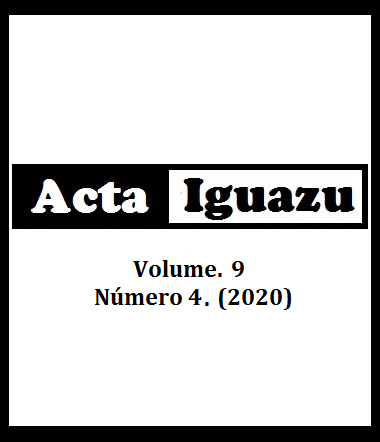Yield components and crop estimation for wheat cultivars at different sowing times
DOI:
https://doi.org/10.48075/actaiguaz.v9i4.25440
Agências de fomento
Palavras-chave:
Triticum aestivum L., water balance, yield components.Resumo
The objective of this study was to evaluate the yield and yield components of wheat cultivars, and compare the productivity obtained in the field and estimated with Jensen model, at different sowing dates, in Cascavel and Palotina cities, Parana state, Brazil. The experiments were carried out in the field at the COODETEC Research Center, located in Cascavel and Palotina. The experiment was conducted in a randomized blocks design in a 7 × 3 factorial, with plots consisting of six lines spaced at 5 × 0.17 meters, with seven wheat cultivars and three sowing dates, with three repetitions. The pluvial precipitation higher than crop evapotranspiration in all cultivation cycles analyzed did not prevent water deficiencies, which occurred predominantly in the heading and physiological maturation stages. The smallest water deficiencies in Cascavel (31.2 mm; April 22) and Palotina (7.2 mm; March 31), from sowing to heading, reduced grain yield by 41.7% and 42.8%, respectively, in relation to the higher productivity of each location. Small differences in yield components (NEM, NGE and MMG) provide differences in grain yield between the cultivars tested. The sowing carried out at the end of April and in May tended to have a higher yield. The best performances with Jensen model to estimate wheat grains yield were obtained for CD 1440 and QUARTZO cultivars. The Jensen model overestimated the grain yield of the CD 108, CD 1104, CD 150 and CD 154 cultivars, since the model do not consider losses due to excessive rainfall and/or pests and diseases.Downloads
Publicado
28-12-2020
Como Citar
MAIA NORETO, L.; KREUTZ ROSA, S. L.; MORETTI DE SOUZA, J. L.; KLOSOWSKI, Élcio S.; YUJI TSUTSUMI, C.; DE ASSIS FRANCO, F. Yield components and crop estimation for wheat cultivars at different sowing times. Acta Iguazu, [S. l.], v. 9, n. 4, p. 62–77, 2020. DOI: 10.48075/actaiguaz.v9i4.25440. Disponível em: https://saber.unioeste.br/index.php/actaiguazu/article/view/25440. Acesso em: 23 dez. 2025.
Edição
Seção
ARTIGOS CIENTÍFICOS
Licença
Aviso de Direito Autoral Creative Commons
Política para Periódicos de Acesso Livre
Autores que publicam nesta revista concordam com os seguintes termos:
1. Autores mantém os direitos autorais e concedem à revista o direito de primeira publicação, com o trabalho simultaneamente licenciado sob a Licença Creative Commons Attribution que permite o compartilhamento do trabalho com reconhecimento da autoria e publicação inicial nesta revista.2. Autores têm autorização para assumir contratos adicionais separadamente, para distribuição não-exclusiva da versão do trabalho publicada nesta revista (ex.: publicar em repositório institucional ou como capítulo de livro), com reconhecimento de autoria e publicação inicial nesta revista.
3. Autores têm permissão e são estimulados a publicar e distribuir seu trabalho online (ex.: em repositórios institucionais ou na sua página pessoal) a qualquer ponto antes ou durante o processo editorial, já que isso pode gerar alterações produtivas, bem como aumentar o impacto e a citação do trabalho publicado (Veja O Efeito do Acesso Livre).
Licença Creative Commons
Esta obra está licenciada com uma Licença Creative Commons Atribuição-NãoComercial-CompartilhaIgual 4.0 Internacional, o que permite compartilhar, copiar, distribuir, exibir, reproduzir, a totalidade ou partes desde que não tenha objetivo comercial e sejam citados os autores e a fonte.


